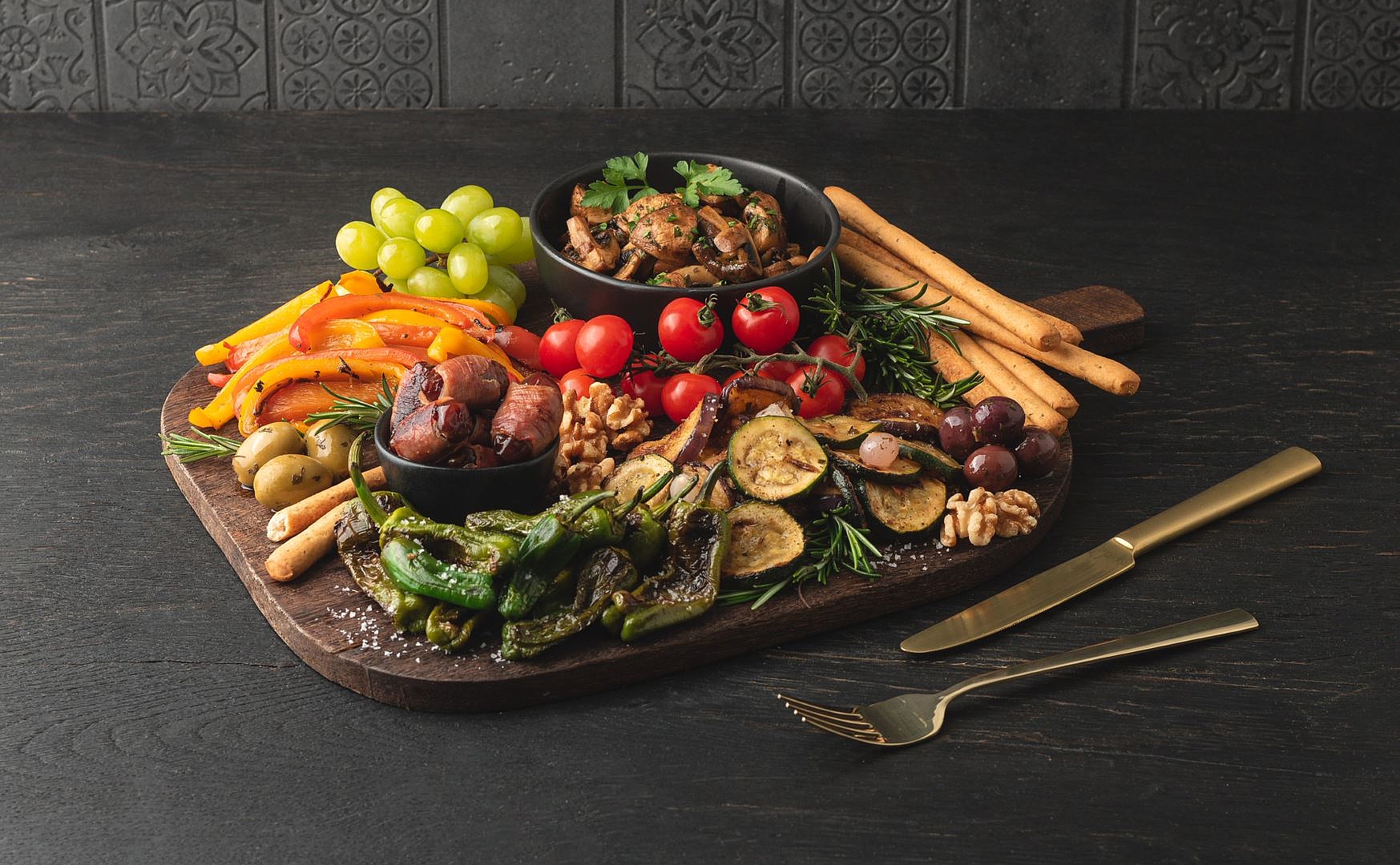
Brighten up your meals with an antipasti platter
Did you know that you can easily prepare antipasti yourself? Whether you’re on a date or celebrating with the family, there couldn’t be a nicer way of showcasing Italian gastronomy than on a platter. Which antipasti are the most popular and what do they taste like in other countries?
What are antipasti and where do they come from?
Food brings people together – wherever you are in the world. People sit around the table, telling stories, having a laugh and enjoying delicious food. In Germany, we don’t tend to share dishes as much as they do in Spain or Italy, but there’s no reason why that can't change.
The perfect initiation into southern gastronomy is an antipasti platter. Typically eaten as a starter, they are easy to prepare and are ideal for when you have a lot of guests round. The Italian word antipasti means ‘before food’ and refers to small, hot or cold hors d’oeuvres made from vegetables, herbs, meat and fish.
Not only are antipasti extremely diverse but they're also inclusive as on a culinary level an antipasti platter can bring together a vegetarian and an organic chicken lover. Antipasti should satisfy all tastes and dietary requirements.
Must-haves on every antipasti platter
Varied, spicy, oozing olive oil and Mediterranean marinades: the idea behind antipasti dates back to ancient times. But what is there on a traditional Italian antipasti platter? Plenty of vegetables like
- balsamic mushrooms
- stuffed artichokes
- roasted peppers
- grilled aubergines and
- courgette fritters.
Each region has its own preferences: in Tuscany, for example, they like to eat Pecorino whereas Sicilian antipasti platters feature a lot of seafood and deep-fried rice balls. In Friuli it contains figs wrapped in San Daniele ham and Piemont loves its grissini breadsticks.
Grapes, olives, nuts, cherry tomatoes... Antipasti are varied, often healthy and wholesome and always delicious. And you can find them in other countries too. Spain is famous for its tapas like dates wrapped in beef bacon, patatas bravas (fried potatoes with a spicy sauce) and pimientos de padrón – small green peppers from the town of the same name.
In Oriental cuisine, the small starters are called mezze, meze, mese or meza, depending on the region. Like tapas, they are not served on an antipasti platter but in dishes. Popular ones are falafel, baba ganoush (a purée made of aubergine and sesame), tabbouleh salad, hummus, and haricot beans in tomato sauce.
How to make your own antipasti: the best ideas
Whether you’re with friends or relatives, or having a romantic candle-lit dinner, antipasti are always a good option. To ensure great vegan vegetable-based antipasti every time, mix olive oil, garlic, oregano, rosemary, salt and pepper to make a marinade. Then cut peppers, courgettes and the like into small pieces, marinade them and spread them out on a baking tray or grill. A drizzle of balsamic vinegar adds the perfect finishing touch to your antipasti. Depending on the season, green asparagus is also a great choice. Do you enjoy eating meat and fish? Then you can also try these fantastic antipasti ideas:
- vitello tonnato: wafer-thin veal with tuna sauce
- beef carpaccio: raw beef with rocket and Parmesan
- sausage platter: Italian salami, mortadella and pancetta
- sweet and savoury: melon with air-dried ham
- seafood: garlic prawns with Italian herbs
Cooking is a creative activity. This especially applies to preparing antipasti. Create your own hors d’oeuvre and design fancy antipasti platters according to taste. If your mouth is watering while reading this as much as ours were while writing it, all that’s left to say is: buon appetito!